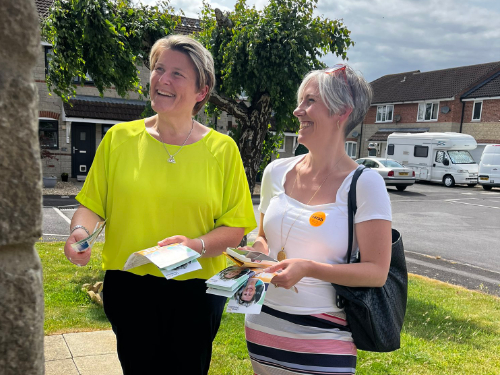
It’s polling day, local elections 2019, I have been up since 5am having done our “good morning” leaflets and I was doing final knock up at about 9pm. I knocked on a door and a young woman answered in her pyjamas. “Hello”, I said, “My name is Hannah and I am just calling to remind you that it is votii….” She interrupted me, “I’m not going to vote and even if I was it would probably be for the Labour party, thanks”… She then shut the door and I took my little bruised Liberal heart on to the next house. At some point, myself or one of the team will have registered that this house was going to vote Liberal Democrat, otherwise I would not have been there at 9pm on polling day. Clearly someone had got it wrong at some point, so how do we make sure we are getting the right information?
For a lot of activists that I speak to in my role, canvassing is one of their favourite things. They love being able to speak to their residents and it feels natural to have these conversations. For others this is not the case and canvassing can seem a really strange activity to have to get used to. It is without doubt the most impactful way that we can engage with voters and so it is worth working with each other to be able to understand what the barriers are to people feeling comfortable knocking on doors, and how we can overcome them.
A great example recently of a local party trying just that was in Chichester. The local party held a campaign briefing and one of the activities was focused around practicing canvassing and trying to ask the right questions to get accurate information about who their pal was pretending that they would vote for.
Learning how to get accurate answers from someone about their political leanings is something that I believe everyone can do but that it takes practice. You can pick up on a lot of their body language, the way they respond to questions about the various different political options and their openness to being quizzed by you however, you must not make any assumptions!
This is how I think I found myself knocking on a non Lib Dem voter on polling day. At some point I expect I had a nice conversation with her about her area or about her dog or how nice her garden was and who wouldn’t want to vote for someone who had had a nice conversation with them on a Sunday?! The answer is, a lot of people.
Having a really good canvassing briefing session before you set off with your team can be really helpful to make sure that everyone is getting the information from voters that the team needs and to make sure that no one is making assumptions.
Here are a few tips and questions that I have been given when attending briefings across the country:
- If you meet someone who says that they have “always voted for the Tories / Labour etc, asking “Are you a happy Tory / Labour supporter” at the moment? leaves the door open to a discussion about their priorities and whether they would consider voting Liberal Democrat this time.
- If you meet someone who says that they “haven’t decided” yet, you could ask if there is a party that they would NEVER vote for? You could also ask if there are two parties that they are torn between?
- Leaving a pause after asking a question, this feels awkward, but leaving a pause can sometimes be really helpful as the person you are speaking to is often also as keen to fill in the silence.
- If you meet someone that says “I am thinking about voting for Reform”, you could ask whether they have spoken to the Reform candidate? This only works in areas where the Reform candidate hasn’t be out campaigning. This can lead on to the fact that the Lib Dems are working hard locally and to the question about whether they would consider voting Lib Dem.
There are lots of different ways of asking questions, so get curious, practice with your team and be yourself! Minivan is a great guide, but there is nothing better than knowing what the questions should be and working them into a natural conversation.
Good luck!